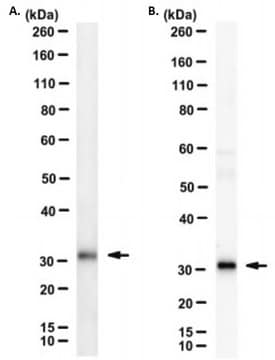J2000
C16-Juvenilhormon
≥65%, liquid, non-sterile
Synonym(e):
JH-III, Juveniles Hormon III, Manduca Hormon, trans,trans-10,11-Epoxy-3,7,11-trimethyl-2,6-dodecadiensäure-methylester
About This Item
Empfohlene Produkte
Biologische Quelle
synthetic (organic)
Qualitätsniveau
Sterilität
non-sterile
Form
liquid
Konzentration
≥65%
Methode(n)
activity assay: suitable
Versandbedingung
ambient
Lagertemp.
−20°C
SMILES String
COC(=O)\C=C(/C)CC\C=C(/C)CC[C@H]1OC1(C)C
InChI
1S/C16H26O3/c1-12(9-10-14-16(3,4)19-14)7-6-8-13(2)11-15(17)18-5/h7,11,14H,6,8-10H2,1-5H3/b12-7+,13-11+
InChIKey
QVJMXSGZTCGLHZ-ZPLWXOMKSA-N
Suchen Sie nach ähnlichen Produkten? Aufrufen Leitfaden zum Produktvergleich
Verwandte Kategorien
Allgemeine Beschreibung
Juvenile hormone III (JH III) is the most prevalent juvenile hormone (JH) found in insects.
Anwendung
- study the effect of juvenile hormone on mictic (sexual) female production of the rotifer Brachionus plicatilis Muller
- study the effect of juvenile hormone on head GB19811 (putative Takeout/juvenile hormone binding protein) mRNA levels in adult honeybees
- study the effect of juvenile hormone on gonadotropic and physiological functions in bumblebee Bombus terrestris
Biochem./physiol. Wirkung
Inhibitor
Ähnliches Produkt
H-Sätze
Gefahreneinstufungen
Aquatic Chronic 4
Lagerklassenschlüssel
10 - Combustible liquids
WGK
WGK 3
Flammpunkt (°F)
Not applicable
Flammpunkt (°C)
Not applicable
Persönliche Schutzausrüstung
Eyeshields, Gloves, multi-purpose combination respirator cartridge (US)
Analysenzertifikate (COA)
Suchen Sie nach Analysenzertifikate (COA), indem Sie die Lot-/Chargennummer des Produkts eingeben. Lot- und Chargennummern sind auf dem Produktetikett hinter den Wörtern ‘Lot’ oder ‘Batch’ (Lot oder Charge) zu finden.
Besitzen Sie dieses Produkt bereits?
In der Dokumentenbibliothek finden Sie die Dokumentation zu den Produkten, die Sie kürzlich erworben haben.
Kunden haben sich ebenfalls angesehen
Unser Team von Wissenschaftlern verfügt über Erfahrung in allen Forschungsbereichen einschließlich Life Science, Materialwissenschaften, chemischer Synthese, Chromatographie, Analytik und vielen mehr..
Setzen Sie sich mit dem technischen Dienst in Verbindung.













